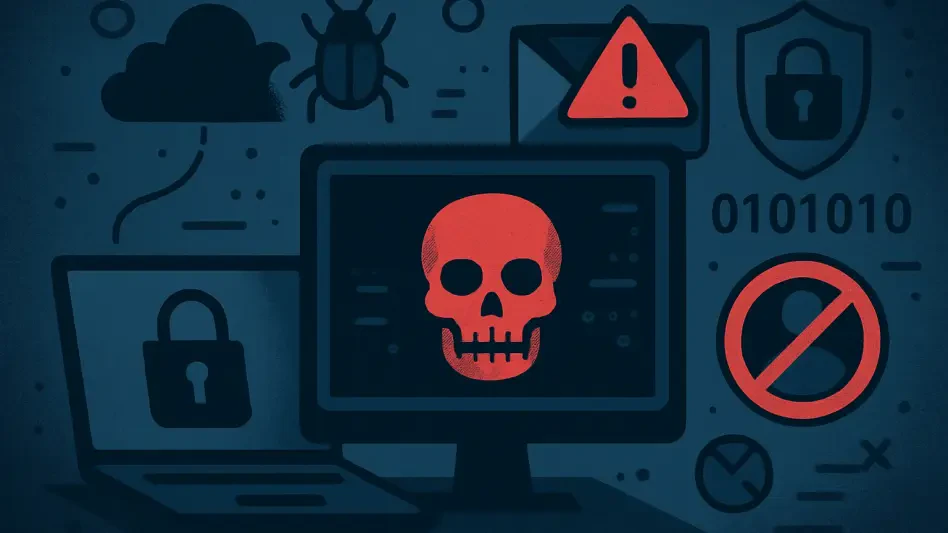In an era where digital landscapes are as critical as physical borders, a recent comprehensive analysis from the Administration for Cybersecurity provides a sobering look at the state of cybersecurity as of August this year, highlighting the urgent need for robust defense strategies. Dubbed the monthly report for August, this document serves as an essential guide for navigating the intricate web of threats, legislative updates, and international developments that define the current cyber environment. It meticulously details the challenges faced by government entities and critical infrastructure, while spotlighting the proactive measures being taken to counter escalating risks. Far from being a mere collection of statistics, this report acts as an urgent reminder of the sophistication and persistence of cyber adversaries. It calls on all stakeholders—government bodies, private sectors, and global partners—to prioritize resilience and innovation in defense strategies. As attacks grow more cunning, the insights offered here aim to arm decision-makers with the knowledge needed to stay a step ahead. This exploration will unpack the critical findings, from groundbreaking policy shifts to the stark realities of vulnerabilities and global threats, offering a clear view of the cybersecurity battleground today.
Policy Milestones Shaping Digital Defense
The August report brings to light a pivotal moment in cybersecurity governance with the passage of a draft amendment to the Cybersecurity Management Act on August 29. This legislative achievement marks a significant stride toward reinforcing national cyber defenses through structured legal frameworks. With plans to revise eight associated regulations within the next six months, the amendment seeks to ensure that policies remain agile and aligned with the rapidly shifting threat landscape. The Administration for Cybersecurity has emphasized the importance of this step as a foundation for enhancing network security, reflecting a deep commitment to safeguarding critical systems against increasingly complex attacks. This move is not just about new rules but about creating a robust ecosystem where law and technology work hand in hand to preempt and mitigate risks.
Beyond the legislative text, there is a clear focus on operational enhancements, such as the integration of real-time monitoring capabilities. This approach aims to provide immediate visibility into potential threats, allowing for quicker responses to incidents before they escalate. The proactive stance taken by the administration signals an understanding that static policies are insufficient in a domain where adversaries adapt daily. By embedding dynamic monitoring and response mechanisms into the legal framework, the goal is to build a resilient infrastructure that can withstand both current and emerging dangers. This policy evolution underscores a broader recognition that cybersecurity is an ongoing battle, requiring continuous updates to both strategy and implementation to protect national interests effectively.
National Security Under Siege from Persistent Threats
A deep dive into the report reveals the unrelenting pressure on government agencies, with a staggering 89,438 pieces of cybersecurity intelligence collected during August. Although this figure shows a slight decline compared to previous months, the breakdown of threats remains deeply concerning. Intrusion attacks lead the pack, accounting for 36% of incidents, closely followed by information collection at 33%, and intrusion attempts at 19%. These statistics highlight a deliberate strategy by malicious actors to breach systems and gather sensitive data, often as a precursor to more damaging operations. The sheer volume of intelligence gathered paints a picture of a digital frontline where government entities are under constant scrutiny and attack.
Equally troubling is the persistence of social engineering as a primary attack vector, with deceptive tactics like malicious emails masquerading as volunteer program applications being used to implant harmful software. While the total number of incident reports dropped to 158, reflecting a 9.2% decrease from the previous year, the prevalence of injection attacks during security exercises points to lingering weaknesses in system architecture and access controls. These findings emphasize that technical defenses alone are not enough; human factors play a critical role in the cybersecurity equation. Addressing these vulnerabilities requires not only better technology but also enhanced training and awareness to counter the psychological manipulation tactics employed by attackers, ensuring that personnel are as fortified as the systems they operate.
Urgent Warnings on Software and Hardware Vulnerabilities
Turning to the technical challenges, the report identifies several critical vulnerabilities in widely adopted software and hardware, many of which are already being exploited by adversaries. High-severity flaws in products such as Cisco Secure Firewall Management Center and Trend Micro Apex One, with risk scores reaching up to 10 on the CVSS scale, present immediate and severe risks. These vulnerabilities open the door to remote code execution, denial of service, and other malicious activities that can cripple essential operations. The active exploitation of these flaws serves as a stark reminder that even well-established tools are not immune to attack if not properly maintained and updated.
The urgency of applying patches and updates emerges as a central theme in mitigating these risks. Additional vulnerabilities in systems like Citrix NetScaler ADC and WinRAR for Windows further illustrate that delays in addressing known issues can have catastrophic consequences. Attackers often capitalize on these lapses, relying on publicly available exploit information rather than developing novel attack methods. This pattern drives home a crucial lesson: maintaining basic security hygiene through timely updates and patch management can prevent a significant number of breaches. Organizations must prioritize these routine yet vital practices to close the windows of opportunity that cybercriminals eagerly exploit, ensuring that known threats do not become costly incidents.
Global Cyber Challenges and the Power of Collaboration
Expanding the lens to the international stage, the report underscores the borderless nature of cyber threats with alarming examples of global risks. A joint advisory from 13 countries has spotlighted a group of China-backed hackers, referred to as “Salt Typhoon,” actively targeting critical infrastructure by exploiting well-documented vulnerabilities. This operation reveals how even basic security oversights can lead to widespread impacts, affecting telecommunications, government services, and military systems across multiple nations. Such incidents highlight that cybersecurity is not a solitary endeavor but a collective challenge requiring shared vigilance and response.
In response to these transnational threats, collaborative efforts are gaining momentum, as evidenced by initiatives like the Product Cybersecurity Forum scheduled for September 24. Hosted by the National Institute of Cybersecurity, this event aims to unite industry leaders, government officials, and academic experts to address common challenges and develop cohesive strategies. The emphasis on partnership reflects a growing consensus that no single entity or country can tackle the scale of modern cyber risks alone. By fostering dialogue and resource-sharing, such forums seek to build a fortified global ecosystem capable of anticipating and countering threats, reinforcing the idea that unity in approach is as critical as technological innovation in securing the digital realm.
Strengthening the Future of Cyber Resilience
Reflecting on the insights from the August report, it becomes evident that while significant strides have been made with legislative updates like the Cybersecurity Management Act amendment, the battle against cyber threats remains far from over. The persistent nature of intrusion attacks and social engineering tactics targeting government agencies underscores the complexity of securing digital environments. Meanwhile, the exploitation of known vulnerabilities in critical software and hardware serves as a harsh lesson in the importance of diligence and timely action.
Looking ahead, the path to enhanced cybersecurity hinges on translating these lessons into concrete steps. Prioritizing patch management and robust security practices must become standard across all sectors, especially for critical infrastructure vulnerable to global threats like those posed by state-sponsored actors. International collaboration, as seen in joint advisories and upcoming forums, should be expanded to facilitate real-time intelligence sharing and coordinated defense strategies. Additionally, investing in training to counter human-targeted attacks can bolster the weakest links in security chains. These actionable measures, grounded in the findings of the report, offer a roadmap for building a more resilient future, ensuring that both national and global systems are better equipped to withstand the evolving landscape of cyber risks.








